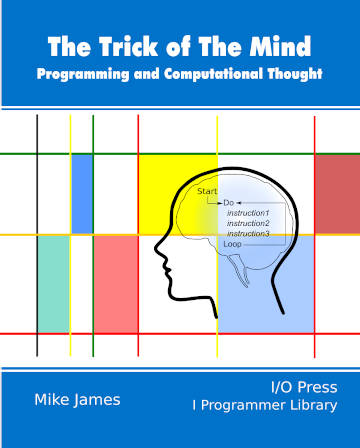| The Trick Of The Mind - Algorithms Binary Search |
| Written by Mike James | ||||||||
| Tuesday, 07 February 2023 | ||||||||
Page 4 of 4
Divide And ConquerThe binary search algorithm is perhaps the most advanced of the simple algorithms. It is easy enough to understand both the problem and its overall solution – the details might be a little trickier, but still understandable. Algorithms of a similar type are often aimed at highly technical problems which tend to need a lot of preparation to understand, let alone solve or comprehend the solution. The general approach used by the binary search is referred to as divide and conquer. The idea is that if you can split a problem that involves N things into two problems involving N/2 things then there is a chance you can solve the problem more efficiently by repeating the process of splitting. Of course, there is no guarantee that this splitting will give you a better algorithm. However, if you can deal with a set of N/2 things faster than you can deal with N things and if putting the solutions back together to give you an overall solution doesn’t take too much extra work then the divide and conquer algorithm is preferable. In the case of the binary search, it is obvious that searching through N/2 things is faster than searching N things and putting the solution back together doesn’t take any extra time as in this case the solution to N/2 things is the solution to N things – if you have found it you have found it! Divide and conquer algorithms are usually described as “fast” or “quick” and the best known are the Fast Fourier Transform (FFT) and Quick Sort – both too involved to describe here, but the background to each is interesting. The story of the FFT is worth recounting. It was invented in 1965 by James Cooley and John Tukey and it is perhaps the most important algorithm of the 20th century. The Fourier Transform is the technique for breaking down signals – audio, video and more – into their constituent frequencies. Before the FFT such analysis was so slow that it was generally impossible to do the job in real time, i.e. as the audio or video was begin produced. The FFT works by dividing the stream of values into two halves and performing that transformation on both. It repeats the division until it gets down to just two values and then it puts the results back together. It is an archetypal divide and conquer algorithm. The FFT revolutionized signal processing and made possible image and video compression. Overnight things that were impossibly slow became possible without any change to the hardware. Without it we would have a much harder time working with photos and video. You could say that the FFT made You Tube possible. The QuickSort was invented by Tony Hoare in 1959 and published in 1961. Its practical effects weren’t as revolutionary as the FFT but they were still important. It too is a divide and conquer algorithm, but you can’t just divide a list into two parts and sort each part. The act of putting the two back together to form a single sorted list takes too many operations to be useful. The solution is to divide the list into two parts depending on a selected value – the pivot. The division is such that the portion to the left is less than the pivot and the portion to the right is bigger than the pivot. When the division reaches a single element the list is then sorted. It can be hard to understand QuickSort, but it is essentially the same as binary search where the target item is the pivot, which is used to create two portions of the list, one smaller and one larger. What is amazing is that repeating this gives you a sorted list and that it is faster than other methods. The value of the QuickSort algorithm is as much its status as a clever algorithm as its undeniable practical value. Not in this extract but in chapter:
Summary
The Trick Of The Mind - Programming & ComputationalThoughtBuy Now From Amazon
Chapter List
<ASIN:1871962722> <ASIN:B09MDL5J1S> To be informed about new articles on I Programmer, sign up for our weekly newsletter, subscribe to the RSS feed and follow us on Twitter, Facebook or Linkedin.
Comments
or email your comment to: comments@i-programmer.info |
||||||||
| Last Updated ( Tuesday, 07 February 2023 ) |


